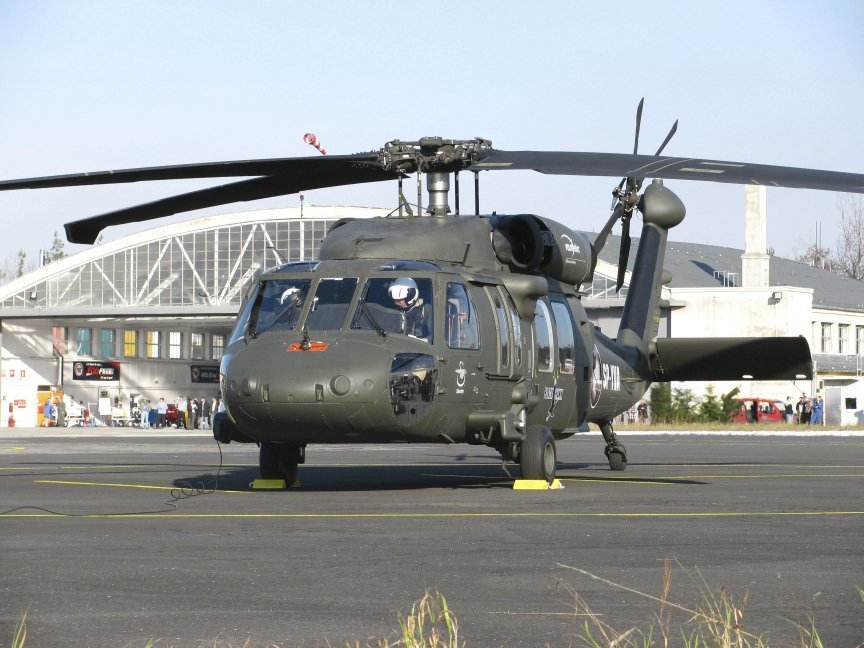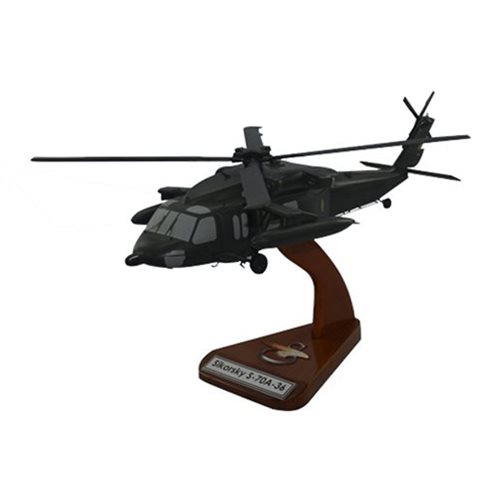Sikorsky S 70: Changing Tactical Workflow with Cutting-Edge Technology
Sikorsky S 70: Changing Tactical Workflow with Cutting-Edge Technology
Blog Article
High-Performance Multi-Role Rotorcraft Featuring Advanced Cockpit Technologies and Integrated Sensor Solutions
The world of rotorcraft technology has seen notable advancements in current times, particularly in the world of high-performance multi-role rotorcraft equipped with innovative cabin technologies and seamlessly integrated sensing unit systems. These developments have not only increased the functional capabilities of rotorcraft but have also substantially influenced modern aeronautics procedures on numerous fronts. From boosted mission versatility to enhanced functional performance, the convergence of advanced cockpit innovations and integrated sensing unit systems has actually ushered in a new era of opportunities for rotorcraft applications. In the complying with conversation, we will certainly check out the evolution of rotorcraft modern technology, explore the world of sophisticated cabin innovations, and analyze the ramifications of integrated sensor systems on the functional versatility and effectiveness of contemporary rotorcraft.
Development of Rotorcraft Innovation
The evolution of rotorcraft technology has actually been marked by substantial improvements in the rules of aerodynamics, products, and propulsion systems, shaping the abilities and performance of modern-day rotorcraft. Wind resistant improvements have enhanced the effectiveness and ability to move of rotorcraft, enabling raised speed, dexterity, and security during trip (sikorsky s 70). Advancements in materials, such as using composite products and progressed alloys, have caused lighter yet more powerful rotorcraft frameworks, boosting overall performance and resilience. Furthermore, improvements in propulsion systems, consisting of extra effective engines and cutting-edge propulsion modern technologies, have allowed rotorcraft to attain greater elevations, faster speeds, and higher hauls.
These improvements have not only transformed the capacities of rotorcraft but have actually likewise broadened their applications across different industries, consisting of armed forces, commercial, and emergency solutions. The continual advancement of rotorcraft modern technology proceeds to drive technology in the area, pushing the limits of what is possible and forming the future of vertical trip.
Advanced Cabin Innovations
Structure upon the fundamental developments in aerodynamics, materials, and propulsion systems, the world of rotorcraft modern technology now changes emphasis towards introducing Advanced Cockpit Innovations. The combination of sophisticated innovations within the cabin environment plays a critical duty in boosting the functional capacities, safety and security, and performance of modern-day rotorcraft. sikorsky s 70. Advanced Cabin Innovations incorporate a broad range of functions made to offer pilots with boosted situational recognition, streamlined information management, and user-friendly control user interfaces
Among the key developments in cabin design is the implementation of glass cabins, which replace conventional analog determines with high-resolution display screens. These digital systems offer adjustable designs, real-time information assimilation, and improved readability, allowing pilots to accessibility important information at a look. Progressed avionics systems, such as fly-by-wire controls and boosted fact screens, are changing how pilots engage with the airplane, allowing for specific control and improved decision-making capacities.


Incorporating sophisticated cockpit technologies not just enhances pilot efficiency however additionally adds to general mission performance and safety in intricate functional environments. By leveraging state-of-the-art modern technologies within the cockpit, rotorcraft producers are setting brand-new standards for functional excellence and goal success.
Integrated Sensor Solutions
With the advancement of rotorcraft modern technology, the assimilation of sophisticated Integrated Sensor Equipment has actually come to be vital in improving functional performance and safety and security. These Integrated Sensing unit Equipments encompass a large array of modern technologies that supply crucial information for different functions such as navigation, security, targeting, and environmental monitoring. By perfectly integrating sensors like radars, cams, lidar, and infrared systems right into rotorcraft, operators can profit from boosted situational awareness, improved mission capacities, and decreased pilot workload.
One key advantage of Integrated Sensing unit Systems is their ability to gather real-time data and provide actionable understandings to pilots and objective drivers. Progressed radar systems can identify and track targets over long ranges, enabling for early threat detection and efficient feedback preparation. In addition, incorporating electro-optical and infrared cameras enables rotorcraft to carry out reconnaissance and surveillance objectives with accuracy and accuracy.
In essence, the combination of sophisticated sensing unit technologies into rotorcraft not just improves operational efficiency but also adds substantially to total objective success and staff safety and security. As rotorcraft proceed to advance, the function of Integrated Sensing unit Solution will undoubtedly remain at the forefront of development in the aerospace sector.
Operational Adaptability and Performance
Enhancing functional adaptability and performance in click to read more rotorcraft is an all-natural progression from the integration of innovative Integrated Sensor Systems. By leveraging the understandings and data provided by these sophisticated sensor systems, rotorcraft can enhance their performance across numerous objectives and environments.
Functional versatility includes the ability of rotorcraft to adjust to different duties and situations successfully. With innovative cabin innovations and integrated sensor systems, rotorcraft can effortlessly change between jobs such as search and rescue, clinical emptying, security, and extra. This versatility boosts the rotorcraft's capability to satisfy varied functional demands without needing substantial reconfiguration.
Performance in rotorcraft procedures is essential for optimizing mission effectiveness and resource utilization. Integrated sensor systems play an essential role in boosting functional performance by giving real-time data on climate condition, terrain mapping, target tracking, and a lot more. This data makes it possible for pilots to make educated decisions quickly, maximize trip paths, save gas, and improve general goal performance.
Influence on Modern Air Travel Workflow

Moreover, the assimilation of innovative sensors facilitates enhanced goal preparation and implementation, allowing rotorcraft to perform a wide variety of tasks with enhanced accuracy. From search and rescue operations to aerial firefighting and law enforcement goals, the capabilities of modern rotorcraft furnished with innovative cockpit innovations and integrated sensor systems are exceptional.
Moreover, the impact of these developments extends beyond functional performance to cost-effectiveness and sustainability. By enhancing flight courses, gas consumption, and upkeep routines, high-performance rotorcraft geared up with sophisticated cabin modern technologies and sensors contribute to reducing operational costs and ecological effect, making them vital properties in modern air travel operations.
Conclusion
Finally, the high-performance multi-role rotorcraft with advanced cockpit modern technologies and integrated sensing unit systems represents a considerable advancement in air travel modern technology. These innovations enhance operational adaptability and effectiveness, inevitably impacting modern-day aeronautics operations in a favorable means. The Visit Your URL combination of these sophisticated technologies allows for enhanced capacities and performance in numerous mission situations, showcasing the proceeded development of rotorcraft innovation in the air travel sector.
The world of rotorcraft modern technology has actually seen significant developments in current times, especially in the realm of high-performance multi-role rotorcraft furnished with advanced cockpit innovations and effortlessly incorporated sensing unit systems. From improved goal versatility to improved functional efficiency, the convergence of innovative cockpit innovations and integrated sensor systems has actually ushered in a new period of possibilities for rotorcraft applications. In the complying with conversation, we will check out the advancement of rotorcraft technology, delve into the realm of advanced cabin developments, and check out the ramifications of incorporated sensing my sources unit systems on the operational versatility and effectiveness of modern rotorcraft.

Report this page